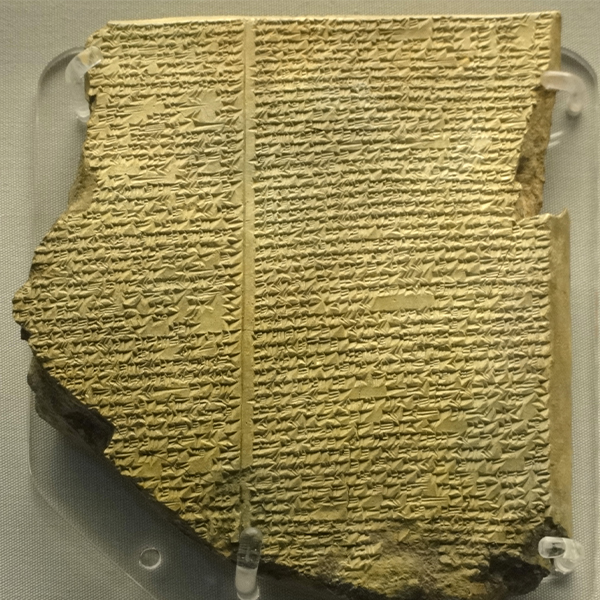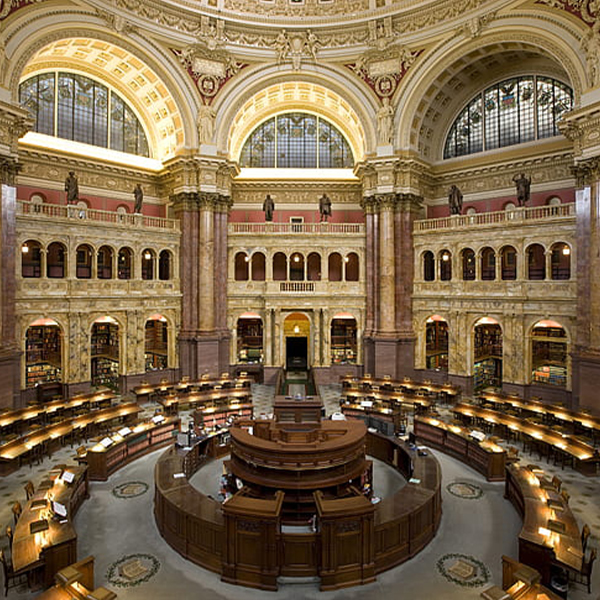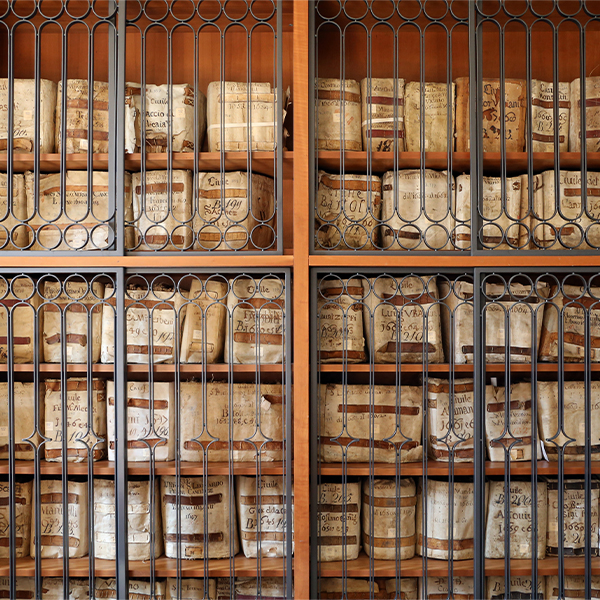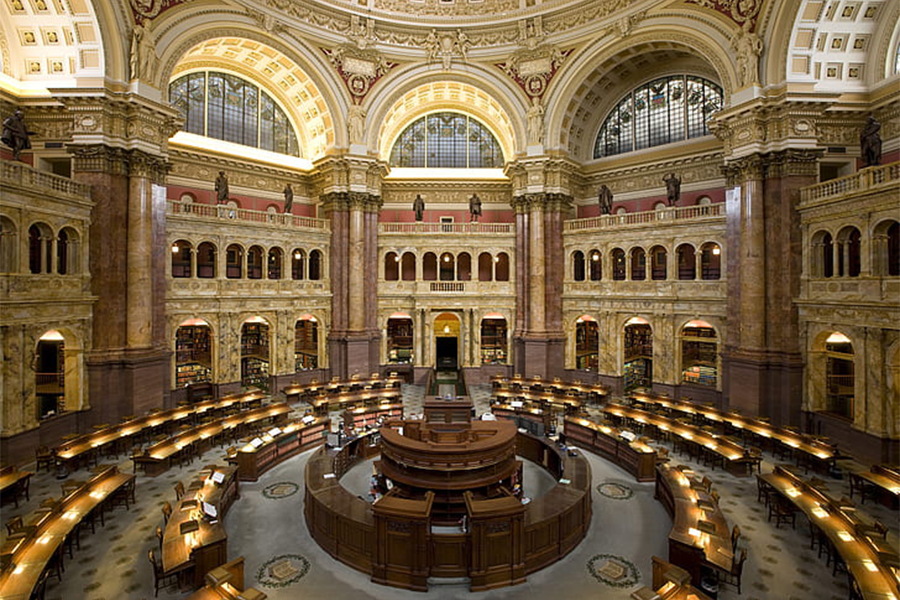Libraries are more than just places to borrow books; they are centers of knowledge, history, and community. From the most ancient archives to the most modern digital collections, libraries continue to inspire and educate. Here are ten fascinating facts about libraries around the world that might surprise you.
1. The World’s Oldest Library
The Library of Ashurbanipal, located in the ancient city of Nineveh, is often regarded as the world’s oldest known library. Established during the reign of the Assyrian king Ashurbanipal in the 7th century BCE, this remarkable repository housed an extensive collection of cuneiform tablets that covered a wide array of subjects, from literature and religion to science and medicine.
Discovered in the mid-19th century by archaeologists, the library contained over 30,000 clay tablets inscribed with texts in Akkadian and Sumerian. Among its most notable works is the Epic of Gilgamesh, one of humanity’s earliest literary masterpieces. The library served not only as a center for knowledge but also as a reflection of Ashurbanipal’s ambition to preserve and promote learning within his empire.
The significance of the Library of Ashurbanipal extends beyond its impressive size; it symbolizes an early effort to collect and catalog information for future generations. Its discovery has provided invaluable insights into ancient Mesopotamian culture, history, and language, making it a cornerstone in our understanding of early human civilization.

The Flood Tablet
2. A Library with No Books
The Bibliotheca Alexandrina in Egypt stands as a modern homage to the ancient Library of Alexandria, one of the most significant libraries of the ancient world. Unlike traditional libraries filled with physical books, this contemporary institution embraces a digital approach, housing vast collections of knowledge that extend beyond printed materials. Opened in 2002, the Bibliotheca Alexandrina aims to revive the spirit of learning and scholarship that once flourished in its predecessor.
This architectural marvel not only serves as a library but also functions as a cultural center, featuring museums, exhibitions, and research facilities. The library’s collection includes millions of books in various formats—digital archives, manuscripts, and multimedia resources—making it accessible to scholars and the public alike. With its commitment to promoting knowledge sharing and cultural exchange, the Bibliotheca Alexandrina exemplifies how libraries can evolve into dynamic spaces for learning without being confined by traditional notions of what a library should be.
3. A Library in the Middle of the Desert
The Al-Qarawiyyin Library, located in Fez, Morocco, is often recognized as one of the oldest existing libraries in the world. Founded in 859 AD as part of the Al-Qarawiyyin Mosque by Fatima al-Fihri, this remarkable institution has played a vital role in the preservation and dissemination of knowledge throughout history. The library houses an impressive collection of ancient manuscripts covering various subjects, including theology, astronomy, mathematics, and medicine.
The architectural beauty of the library is equally noteworthy. Its intricate woodwork and stunning tile mosaics reflect the rich cultural heritage of Morocco and Islamic art. In recent years, significant restoration efforts have been made to preserve its historical significance while modernizing its facilities to accommodate visitors and scholars alike.
As a center for learning for centuries, the Al-Qarawiyyin Library continues to attract researchers from around the globe who seek to explore its vast resources. It stands not only as a testament to Morocco’s intellectual legacy but also as a beacon of knowledge in an often harsh desert landscape.

Qarawiyine library reading room
4. A Floating Library
The Epos Library in Norway is a remarkable example of innovation in the realm of public libraries. This floating library, situated on the picturesque waters of the Oslo Fjord, combines literature and nature in a unique setting. Designed to promote reading and accessibility, the Epos Library features a sustainable structure that not only houses an extensive collection of books but also serves as a community hub for cultural events and educational programs.
Visitors can enjoy stunning views while browsing through various genres, from classic literature to contemporary works. The library’s design incorporates eco-friendly materials and technology, reflecting Norway’s commitment to sustainability. Moreover, its mobility allows it to reach different communities along the fjord, ensuring that everyone has access to literary resources regardless of their location.
In addition to lending books, the Epos Library organizes workshops and reading sessions aimed at fostering a love for literature among all ages. This innovative approach not only enhances literacy but also strengthens community bonds by bringing people together in an inspiring environment. As we look toward the future of libraries, projects like the Epos Library highlight how creativity can transform traditional concepts into dynamic spaces that enrich our lives.
5. The Largest Library in the World
The Library of Congress in Washington, D.C., holds the title of the largest library in the world, a remarkable institution that serves as a treasure trove of knowledge and culture. Established in 1800, it has grown to house more than 170 million items, including books, recordings, photographs, maps, and manuscripts. This vast collection spans numerous subjects and formats, reflecting the rich tapestry of human history and creativity.
One of the key features of the Library of Congress is its commitment to preserving materials that document American history and culture. Its holdings include rare documents such as Thomas Jefferson’s handwritten draft of the Declaration of Independence and an extensive collection of early American newspapers. Additionally, the library plays a crucial role in promoting literacy and education through various programs aimed at enhancing public access to its resources.
Visitors to the Library can explore its stunning architecture and exhibits that showcase significant artifacts from across different eras. With reading rooms dedicated to various subjects and fields, researchers and enthusiasts alike can delve into an unparalleled wealth of information. The Library also embraces digital innovation by providing online access to many collections, making it easier than ever for people around the globe to engage with its vast resources.

The Library of Congress in Washington, D.C.
6. A Library That Can Withstand an Earthquake
Japan’s National Diet Library, established in 1948, is not only a repository of the nation’s vast collection of books and documents but also a remarkable example of architectural resilience. Located in Tokyo, this library has been designed with advanced engineering techniques to withstand earthquakes, a crucial consideration in a country frequently affected by seismic activity.
The building incorporates a variety of features aimed at ensuring its structural integrity during an earthquake. For instance, it utilizes base isolation technology that allows the foundation to move independently from the upper structure during seismic events. This reduces the amount of stress transferred to the building itself. Additionally, its reinforced concrete design provides enhanced durability and stability.
Beyond its physical attributes, Japan’s National Diet Library plays an essential role in preserving cultural heritage and providing access to information for legislative purposes. It houses millions of items ranging from government publications to historical texts, making it an invaluable resource for researchers and citizens alike. The combination of its robust construction and commitment to knowledge preservation exemplifies how institutions can adapt to natural challenges while continuing their mission effectively.
7. Librarians Once Used Live Animals
In medieval times, European libraries often kept cats as part of their operations. These feline companions served a practical purpose beyond mere companionship; they were essential in maintaining the cleanliness and integrity of the library’s collections. Libraries during this period were often housed in monasteries and other institutions where food sources attracted rodents. Cats were naturally adept at controlling these pests, ensuring that precious manuscripts and scrolls remained safe from damage.
The presence of cats in libraries not only helped protect valuable texts but also contributed to a serene environment conducive to study and reflection. This unique relationship between librarians and their furry helpers highlights an interesting aspect of historical practices in knowledge preservation. While modern libraries may not employ live animals for pest control, the legacy of these partnerships remains a charming reminder of how resourcefulness was key to maintaining the sanctity of knowledge throughout history.
8. A Library Built from Ice
Sweden’s Ice Library, an innovative and captivating concept, stands as a testament to the country’s commitment to sustainability and creativity. Located in the heart of Sweden’s frozen landscapes, this unique library is constructed entirely from ice harvested from nearby lakes. The design not only showcases architectural ingenuity but also serves as a remarkable example of how natural resources can be utilized in environmentally friendly ways.
The Ice Library is designed to provide a tranquil space for reading and learning while blending seamlessly with its icy surroundings. Visitors can explore a collection of books that focus on themes related to nature, climate change, and sustainability—topics that resonate deeply within the context of its frosty environment. The library operates seasonally, typically open during the colder months when temperatures remain low enough to maintain its icy structure.
As an attraction, Sweden’s Ice Library draws both locals and tourists alike, offering workshops and events that promote literacy and environmental awareness. This enchanting facility not only enriches the community but also encourages discussions about climate change through its very existence—a stunning reminder of nature’s beauty and fragility.
9. Underground Libraries Exist
Underground libraries, often shrouded in mystery and intrigue, hold a wealth of knowledge that is not readily accessible to the public. One of the most famous examples is the Vatican Secret Archives. Contrary to what the name might suggest, these archives are not secretive in a conspiratorial sense; rather, they are private and meticulously curated collections of documents that date back over 1,000 years.
The Vatican Secret Archives contain an extensive array of historical records related to the governance of the Catholic Church and its dealings with various states throughout history. These documents include letters from popes, correspondence with kings and emperors, as well as records from significant events such as the Inquisition. The archives are housed in a vast complex beneath Vatican City and span approximately 85 kilometers (about 53 miles) of shelving.
Access to these archives is highly restricted; only qualified researchers can request permission to view specific documents for scholarly purposes. This exclusivity adds an air of mystique around the collection, fueling curiosity about what secrets may lie within its walls. The Vatican Secret Archives serve as a reminder that there are still hidden repositories of knowledge waiting to be explored by those willing to uncover their stories.

The Vatican Secret Archives
10. Librarians Who Deliver Books on Donkeys
In Colombia, a librarian named Luis Soriano has become a beacon of hope and creativity in the realm of literacy and education. Soriano is known for his unique initiative that involves delivering books on donkeys to remote villages where access to literature is limited. His program, called “Biblioburro,” aims to bring the joy of reading to children and adults alike, overcoming geographical barriers that often hinder educational resources.
Each week, Soriano loads up his trusty donkeys, Alfa and Beto, with carefully selected books and travels through rugged terrains to reach communities that lack libraries. This innovative approach not only promotes literacy but also fosters a love for reading among those who might otherwise never have the opportunity to explore new worlds through literature. By integrating traditional methods with modern needs, Luis Soriano exemplifies how passionate individuals can make a significant impact on their communities. His story serves as an inspiring reminder of the power of books and the lengths some will go to ensure that everyone has access to knowledge.
Conclusion: Why Visiting a Library is an Experience Like No Other!
Visiting a library is an experience like no other, offering a unique blend of tranquility, knowledge, and community engagement. Libraries serve as sanctuaries for learning and exploration, providing access to a vast array of resources that cater to diverse interests and age groups. From rare manuscripts to the latest bestsellers, the sheer volume of information available can ignite curiosity and foster a love for reading.
Moreover, libraries are more than just repositories of books; they are vibrant community hubs that host events, workshops, and discussions. This fosters connections among individuals with similar interests while promoting lifelong learning. The atmosphere in a library encourages introspection and focus, making it an ideal place for study or contemplation.
In conclusion, the experience of visiting a library transcends mere book borrowing. It is about immersing oneself in an environment rich with possibilities—where knowledge is freely shared and community bonds are strengthened. Whether you’re seeking information or simply looking for a quiet place to reflect, libraries offer an unparalleled experience that enriches both mind and spirit.


